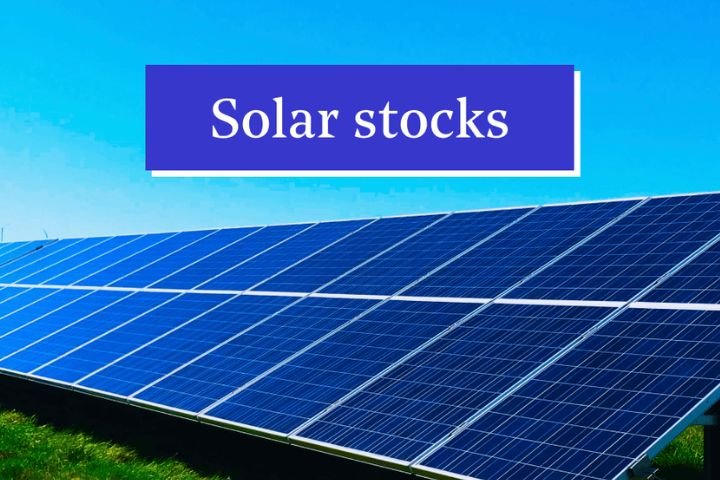India’s solar sector has entered a phase of truly accelerated growth, driven by a combination of strategic investment, policy support, and sharply rising demand for clean energy. With capacity milestones being reached and capital flowing into the sector, solar energy is rapidly becoming central to India’s ambition of delivering low-carbon, reliable power to millions of households and industries.
This article explores the first quarter of 2025 performance in India’s power sector, with a special lens on solar power — a prime beneficiary of green energy trends — and what it means for investors eyeing solar energy stocks and those ready to open demat accounts.
Power sector growth — Q1 2025 snapshot
Data from January to March 2025 show that India’s power sector added a notable 13,495 MW of new capacity. After accounting for the retirement of 285 MW of gas generation, net additions still reached 13,210 MW. Total installed power generation capacity stood at 475.2 GW by end‑March. Despite contributions from thermal and hydropower, renewables dominated new capacity. They accounted for 78.9% of all additions — a clear signpost for the shift toward clean energy. Within that, solar power was the largest segment by far.
Solar leads the charge
Solar power capacity crossed the 100 GW mark in January 2025 and stood at 105.6 GW by quarter-end — a gain of 7,782 MW in just three months. This achievement highlights both policy consistency and energy demand from industrial and residential customers. To put that in perspective: India has grown from just 2.82 GW of solar capacity in 2014 to over 100 GW in 2025 — a pivotal leap underscoring the sector’s long-term momentum.
Solar, wind, hydropower, biomass and waste-to-energy collectively raised non-fossil capacity to 228 GW by March 2025. Beyond utility-scale solar, rooftop systems in urban and semi-urban locations also gained traction, supported by central and state subsidies.
Rising demand makes solar irresistible
India’s electricity production reached 445.5 billion units (BUs) between January and March, marking 3.6% growth over the previous year. Clean energy sources pulled much of this increase — solar and wind output rose 16.6%, while nuclear increased by 16.7%, and fossil fuels declined from 80.4% to 77.9% of total generation. For investors, this trend signals that solar’s share of electricity production is steadily climbing — good news for solar energy stocks.
Private and public investment surge
Q1 2025 saw investment in renewable energy soar to US$ 9.84 billion — a 7.7‑fold increase from the same quarter in 2024 and more than double the previous quarter. This influx points to widespread confidence from both domestic and international financiers in the viability of solar and other renewable projects. Such large-scale capital flows help to bring down financing costs for solar power developers, support infrastructure deployment, and improve returns — boosting investor sentiment around listed solar and energy firms.
Major projects reinforce supply chain
While solar has taken centre stage, thermal projects are still being commissioned to ensure reliable baseload power and manage peak demand. Key coal-based additions included Khurja Super Thermal (660 MW) and Panki Thermal Unit (660 MW) in Uttar Pradesh, Yadadri Thermal Unit II (800 MW) in Telangana, and Bhusawal Thermal Unit VI (660 MW) in Maharashtra. Even as coal-based additions decline in relative share, these thermal assets remain essential for grid stability — especially during summer peaks.
Regional highlights in solar deployment
State-level contributions underline how local policies matter. Rajasthan added 1,973 MW, Gujarat 1,910 MW, Maharashtra 1,780 MW, Karnataka 1,316 MW, and Andhra Pradesh 940 MW — a resurgence driven by its clean energy policy initiated in late 2024. These patterns indicate that state initiatives such as auctions, incentives, and streamlined approvals are boosting solar’s pace across regions.
Implications for investors
Solar developers, panel manufacturers, and infrastructure firms have become eyes-on targets for investors seeking to capture long-term green-sector growth. Ramping capacity, strong demand forecasts, and rising electricity prices all provide earnings leverage for listed solar-linked companies. Today, anyone can open demat accounts online within minutes and take part in India’s green energy story — whether through solar firms, power companies, or thematic mutual funds. This democratisation of investing puts individual investors in a strong position to benefit from structural growth trends.
Challenges on the path ahead
Despite clear progress, the sector still faces certain bottlenecks. Land acquisition delays, project pipeline approvals, and financing issues for smaller developers continue to present obstacles. Grid congestion in solar hotspots due to faster project commissioning versus grid upgrades is also a concern. To keep momentum on track, ongoing coordination between state agencies, transmission operators, and developers will be crucial.
What to watch next
Key developments to monitor include grid readiness, further investment announcements in storage and hybrid projects, and deeper corporate alignment with India’s clean energy goals. As battery storage and transmission infrastructure catch up with capacity growth, the ecosystem will become more efficient and robust.
Final thoughts
The Q1 2025 data confirms that solar power is no longer just an environmental objective; it is central to India’s energy strategy and its energy market evolution. With significant capacity additions, record-breaking investments, and rising electricity demand, solar’s momentum is hard to ignore. For investors, especially retail participants ready to open demat accounts, exposure to solar energy stocks offers a chance to participate in a sector that is scaling decisively with the nation’s development agenda. As infrastructure catches up and policy remains supportive, solar stands out not just as the future of clean energy, but as a compelling long‑term investment theme.
Also Read: What is MyFastBroker.com?

